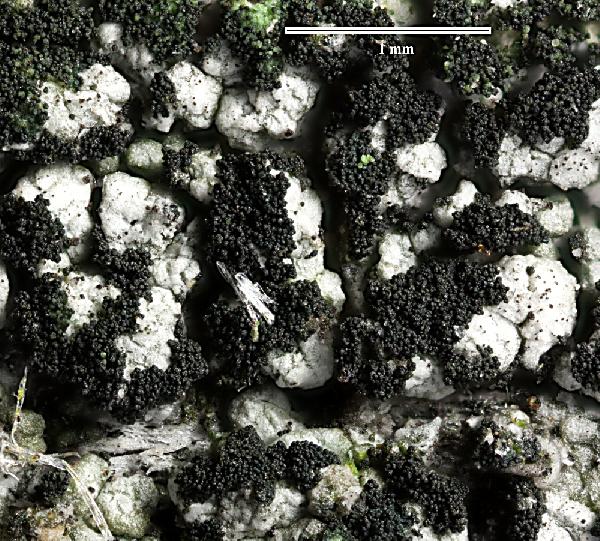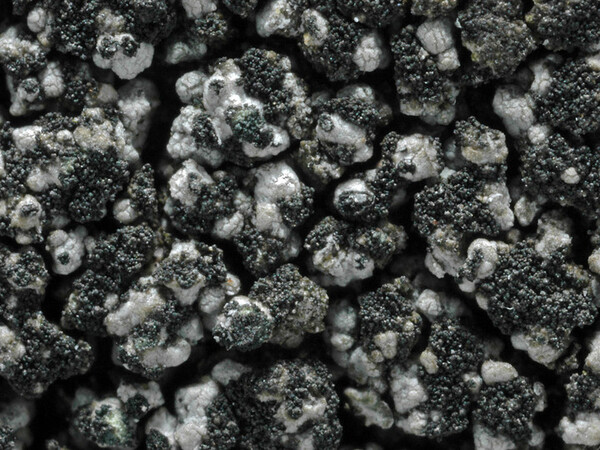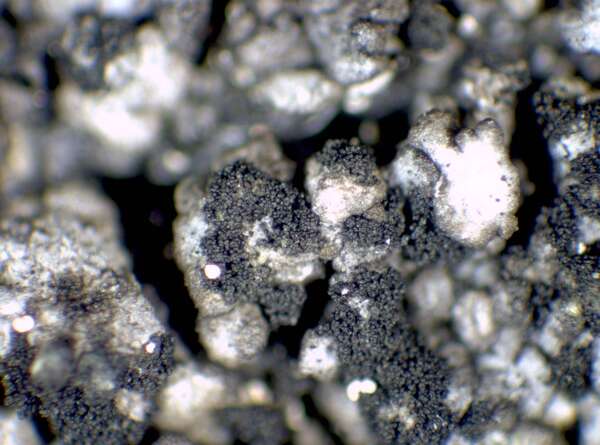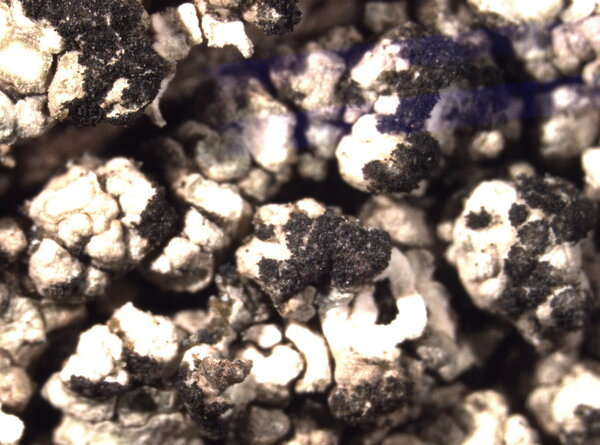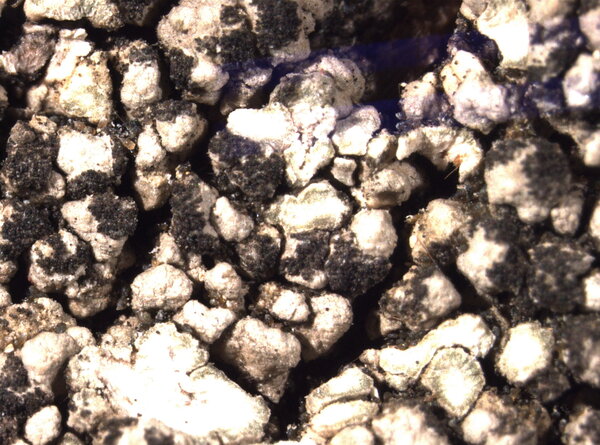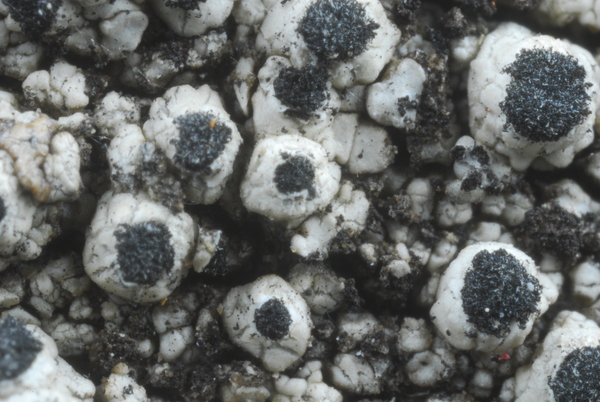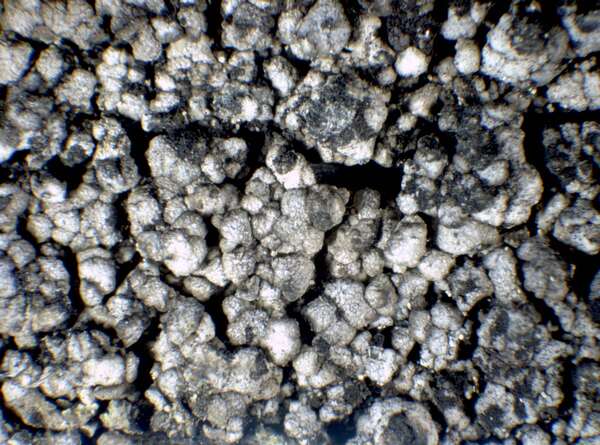Pseudothelomma ocellatum (Körb.) M. Prieto & Wedin
Fungal Divers., 2016 (MB 817543). Basionym: Acolium ocellatum Körb. - Parerga Lichenol.: 285, 1861.
Synonyms: Cyphelium caliciforme (Flot.) Zahlbr.; Cyphelium ocellatum (Körb.) Trevis.; Thelomma ocellatum (Körb.) Tibell
Distribution: N - Ven (Nascimbene & al. 2021), TAA (Thor & Nascimbene 2007, Nascimbene & al. 2007b, 2008c, 2014, 2022, Nascimbene 2008b, 2014, Puntillo & Puntillo 2009, Nimis & al. 2015), Lomb (Puntillo & Puntillo 2009), VA (Piervittori & Isocrono 1999, Puntillo & Puntillo 2009). S - Bas (CLU 17804), Cal (Puntillo & Puntillo 2015c).
Description: Thallus crustose, episubstratic, well-delimited areolate to coarsely warted, grey, covered in subglobose, blue or brown-black isidioid outgrowths gathered in more or less convex, soralia-like clusters located on the top of 1.5-2(-2.5) mm wide warts with a rough upper surface Apothecia rare, immersed in the warts, the disc 0.5-1 mm across, covered in a sometimes greenish yellow-pruinose mazaedium. Exciple not sclerotized, poorly developed laterally, forming a very thick, blackish brown cushion at the base; upper part very thin and colourless; hypothecium blackish brown. Asci cylindrical, formed singly, with a single functional wall layer dissolving at an early stage, with uniseriately arranged spores. Ascospores 1-septate, somewhat constricted at the septum, dark brown, broadly oblong at maturity, 22-28 x 12-15 µm, with a slightly uneven surface. Photobiont chlorococcoid. Spot tests: thallus K-, C-, KC-, P-, UV-; medulla I+ dark blue. Chemistry: occasionally with usnic acid, atranorin, or norstictic acid; mazaedium and edge of exciple with rhizocarpic acid and epanorin. Note: a circumboreal-montane species found on hard rotting wood, e.g. on poles and fences, more rarely on Larix and Pinus cembra in the subalpine belt, also known from the mountains of Southern Italy; certainly more widespread in the Alps, especially in subcontinental areas, but overlooked, being mostly sterile. This is one of the few calicioid fungi that reproduce via lichenised diaspores.
Growth form: Crustose
Substrata: bark and lignum
Photobiont: green algae other than Trentepohlia
Reproductive strategy: mainly asexual, by soredia, or soredia-like structures (e.g. blastidia)
Commonnes-rarity: (info)
Alpine belt: extremely rare
Subalpine belt: rather rare
Oromediterranean belt: extremely rare
Montane belt: extremely rare
Submediterranean belt: absent
Padanian area: absent
Humid submediterranean belt: absent
Humid mediterranean belt: absent
Dry mediterranean belt: absent
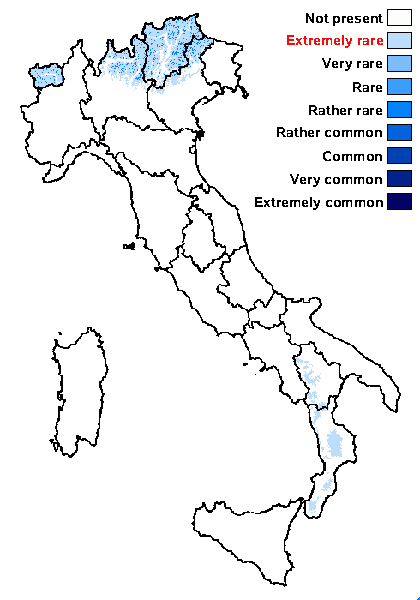
Predictive model
Herbarium samples
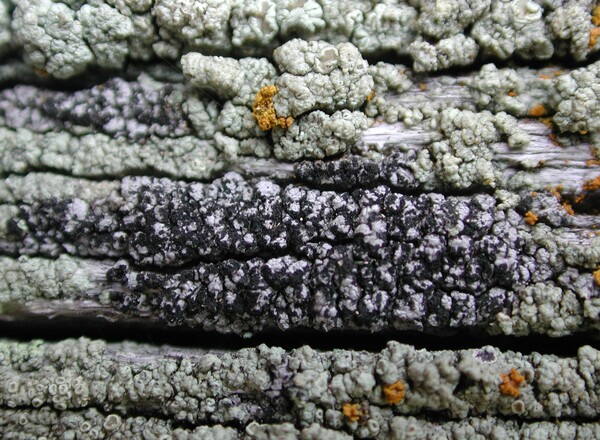

Juri Nascimbene - CC BY-SA 4.0; Owner: ITALIC - Dyades Project - Dept. of Life Sciences, University of Trieste
Italy, Trentino-Alto Adige, Bolzano/Bozen, Sciliar/Schlern
2007


Juri Nascimbene - CC BY-SA 4.0; Owner: ITALIC - Dyades Project - Dept. of Life Sciences, University of Trieste
Italy, Trentino-Alto Adige, Bolzano/Bozen, Sciliar/Schlern
2007
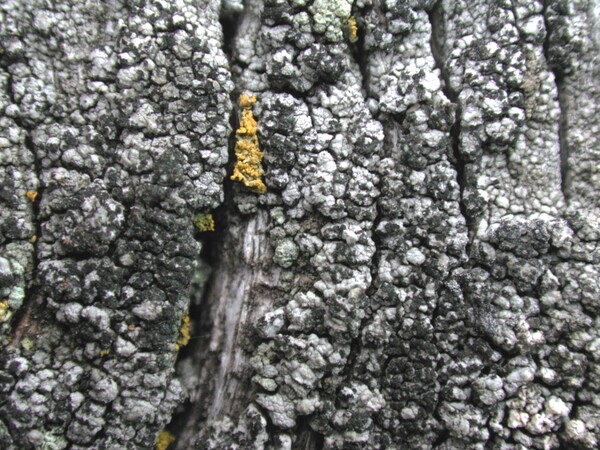

Juri Nascimbene - CC BY-SA 4.0; Owner: ITALIC - Dyades Project - Dept. of Life Sciences, University of Trieste
Italy, Trentino-Alto Adige, Bolzano/Bozen, Sciliar/Schlern
2007
Growth form: Crustose
Substrata: bark and lignum
Photobiont: green algae other than Trentepohlia
Reproductive strategy: mainly asexual, by soredia, or soredia-like structures (e.g. blastidia)
Commonnes-rarity: (info)
Alpine belt: extremely rare
Subalpine belt: rather rare
Oromediterranean belt: extremely rare
Montane belt: extremely rare
Submediterranean belt: absent
Padanian area: absent
Humid submediterranean belt: absent
Humid mediterranean belt: absent
Dry mediterranean belt: absent

Predictive model
| Herbarium samples |


Juri Nascimbene - CC BY-SA 4.0; Owner: ITALIC - Dyades Project - Dept. of Life Sciences, University of Trieste
Italy, Trentino-Alto Adige, Bolzano/Bozen, Sciliar/Schlern
2007


Juri Nascimbene - CC BY-SA 4.0; Owner: ITALIC - Dyades Project - Dept. of Life Sciences, University of Trieste
Italy, Trentino-Alto Adige, Bolzano/Bozen, Sciliar/Schlern
2007


 Index Fungorum
Index Fungorum
 GBIF
GBIF
